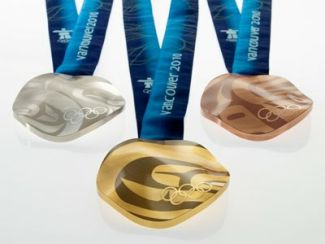
, the provider of metals used in the 2010 medals,has developed a process by which it recovers and smelts metalscontained in cathode ray tube glass, computer parts and circuit boards.
Granted, the recycled content in the medals is very small–only 1.52% in the gold medals, just 0.122% in silver and 1.11% of the copper–but it's a start.
These are among the heaviest medals in the Games history and also the first to sport an undulating surface–meant to mimic the waterways and mountain topography of British Columbia. in which you'll learn more about the medals, which are derived from Komoyue and Tlingit images of the orca whale and raven and are the work of Corrine Hunt, a Canadiandesigner/artist based in Vancouver, BC.
—is a freelance writer, covering the environment, sustainability andoutdoor recreation. The Good Route, her blog for ���ϳԹ��� Online, isfocused on the places where the active life and sustainability merge.